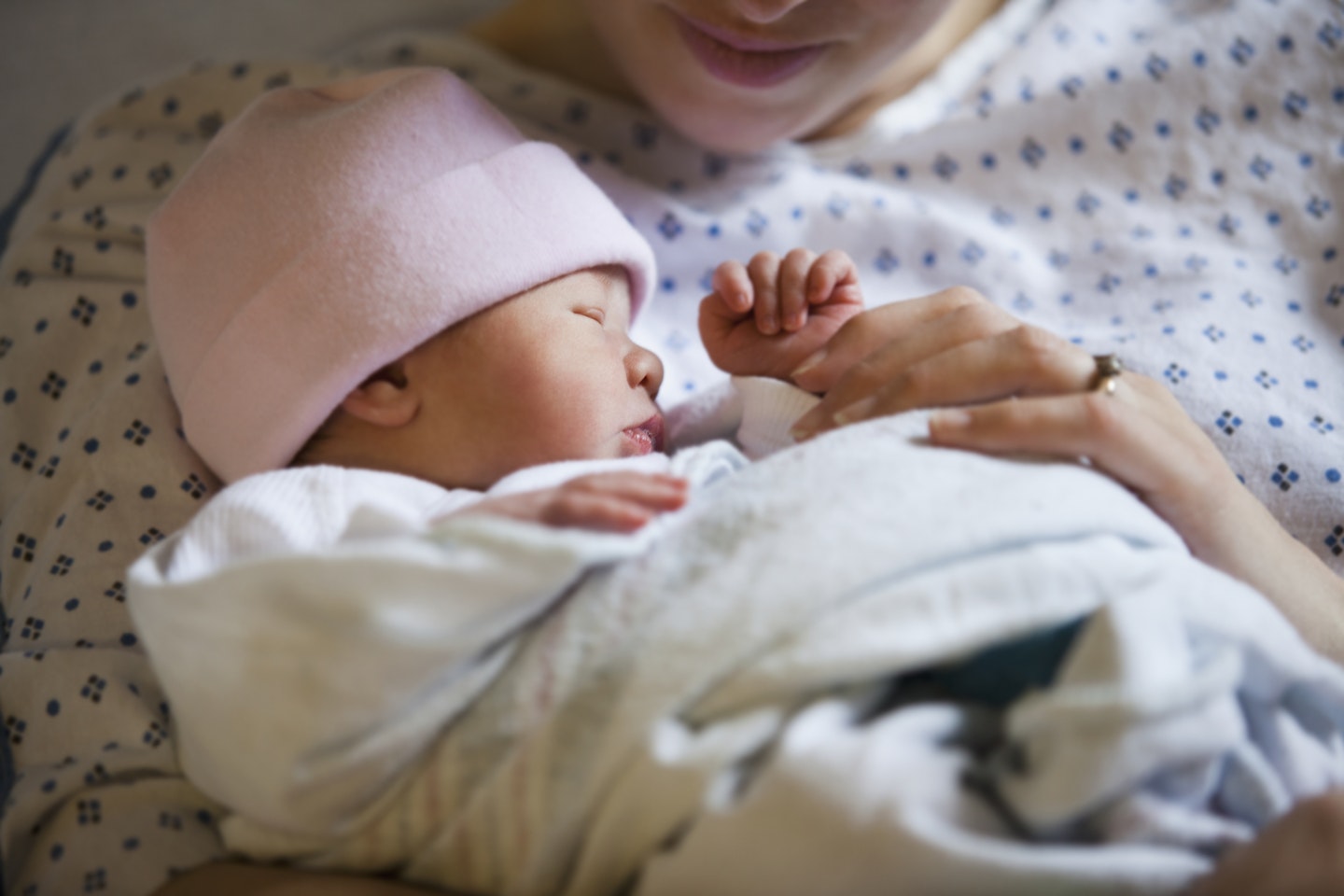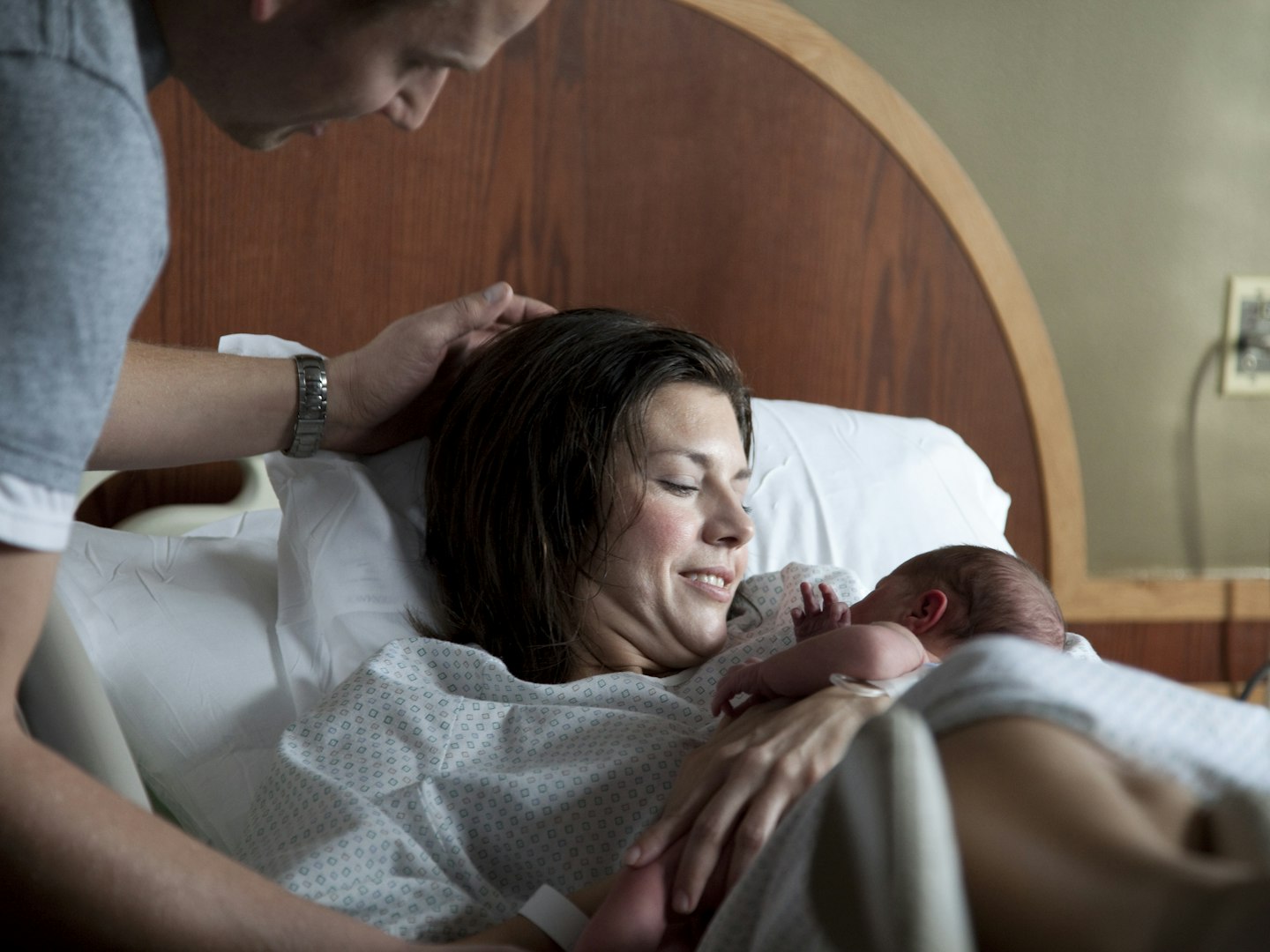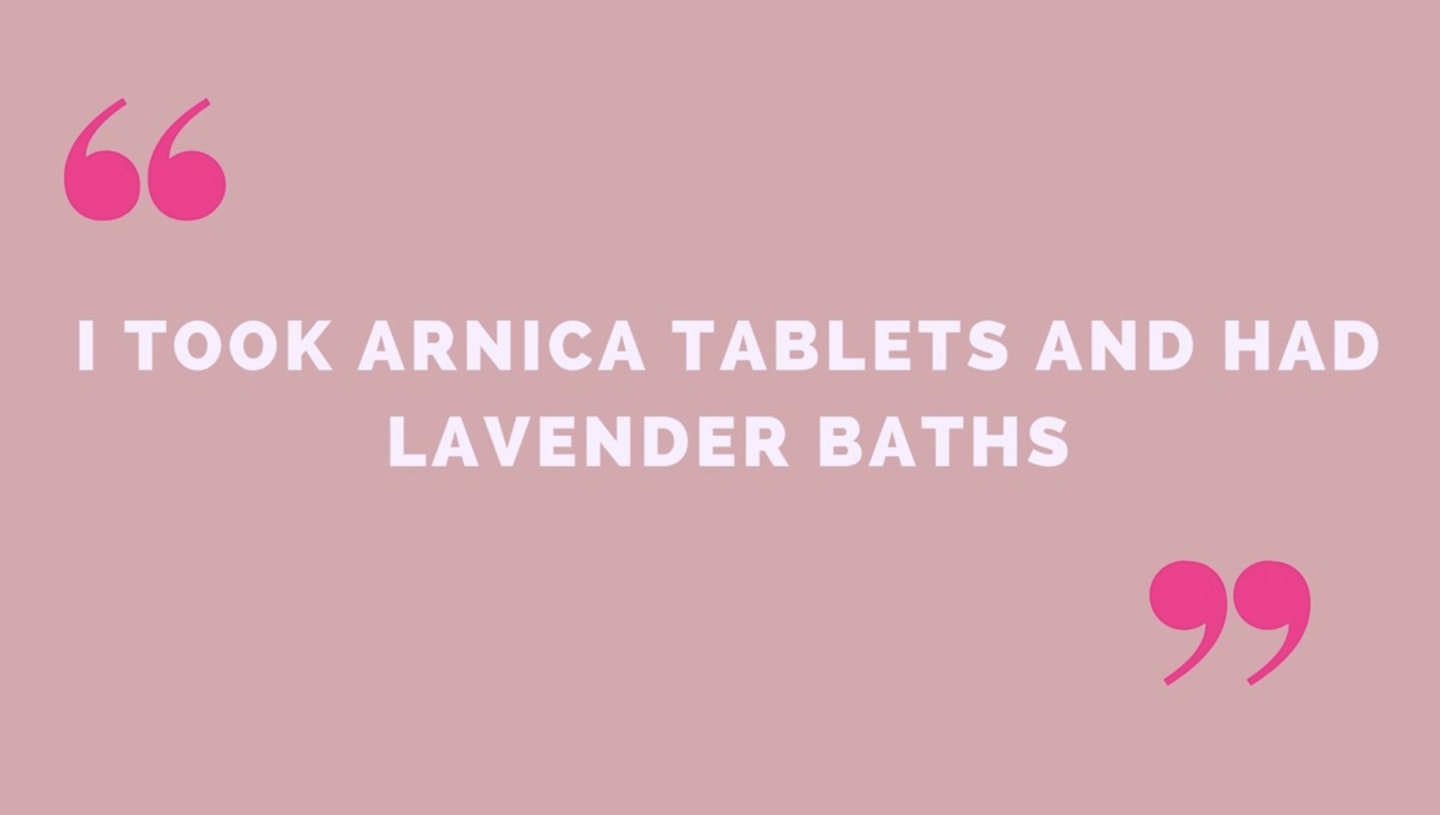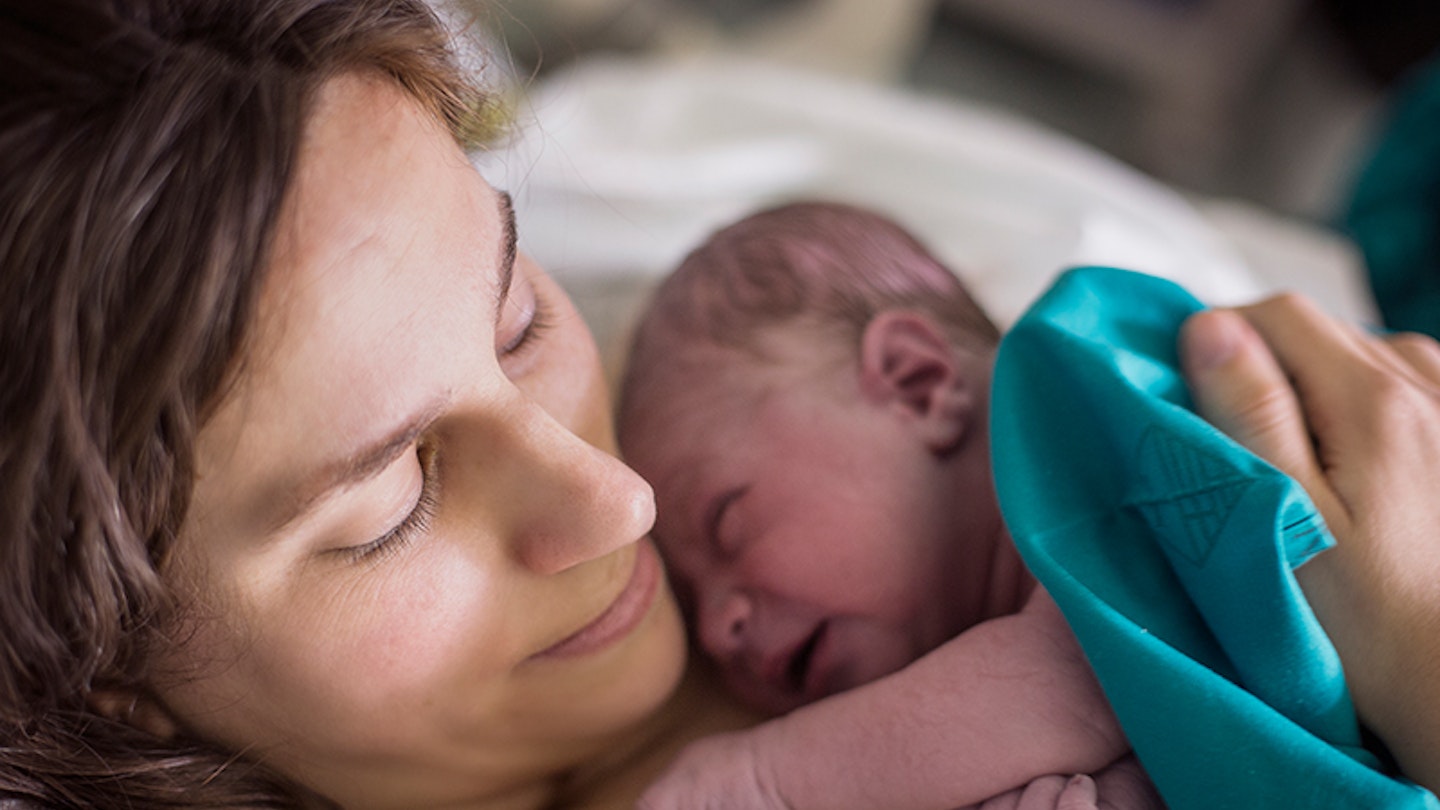A caesarean (or C-section) is when a cut is made in your tummy and womb to deliver your baby.
In the UK around 25% of babies are born via Caesarean section. Around 10% are elective C-sections (i.e. chosen by the mother for personal, medical or sometimes psychological reasons, and planned ahead of time) and around 15% are emergency or unplanned C-sections (which may be necessary for a multitude of different reasons).
Registered midwife and co-founder of My Expert Midwife, Lesley Gilchrist, explains why it is important for pregnant women to learn about C-sections, regardless of how they plan to give birth, and how considering a C-section as part of their birth plan may help women feel more in control of their experience. And, of course, we answer all of your most pressing C-section questions.
Five things to consider about C-sections when preparing for birth

1. Knowledge is power
"By finding out what happens during C-section and understanding the choices and options available, women and their partners can feel more prepared and in control of their birth experience if a C-section was to become the necessary or chosen way to birth their baby, whether this is planned or unplanned," says Lesley.
“There are many different reasons why an unplanned C-section may be the safest birth choice and requiring one should never be seen as a ‘failure’. Women and couples can feel more empowered and at ease once they understand why a C-section may become necessary and learn about what happens during and after one.”
2. The birth plan
A birth plan is as important for women who are having a planned C-section as it is for those who are planning on giving birth vaginally, also known as 'natural birth' by some. Adaptations can take place in an operating theatre to help enable a calmer birth experience and make the experience more personal.
“Even in the event of an emergency C-section, it can still be possible for some decisions and wishes to be honoured. A birth partner who is familiar with the birth plan and a team who is up to speed with it (printing several copies for everyone is a good tip) means a greater chance that the woman’s preferences will be respected and fulfilled.”
Some things to consider could be:
• A playlist of music to be played during the birth - most hospitals will have the facilities to play music in the operating theatre.
• If a couple would like to see their baby being born, they can ask for the surgical drape to be lowered.
• Consider options surrounding delaying clamping of the umbilical cord - advice from The World Health Organisation is to leave the cord unclamped for between 3-5 minutes to maximise benefits like the increased transfer of stem cells and prevention of anaemia.
• So long as the baby does not need any immediate interventions when it is born, then the parents should be able to have skin-to-skin contact immediately.
• Think about seeding the microbiome. This is a relatively new practice after research discovered that babies born via caesarean section were more susceptible to infections than those born vaginally. Swabbing your baby with the friendly bacteria from your vagina and perineum is thought to colonise your baby’s skin and gut, helping to promote a healthy start to life.
3. The hospital bag
A few tweaks to the hospital bag can help women be more comfortable after a C-section. “As mobility will be affected following the surgery, an extra-long phone cable can make sure mum doesn’t need to reach for her phone to stay in touch, whilst a long, bendy straw means she can stay hydrated without struggling to sit up," suggests Lesley.
“When packing clothing for labour and beyond, think about underwear that will cover but not rub the incision and short sleeved, button-up tops that might make dressing with a drip or canula easier. A small cushion can be useful to hold over the wound when moving and to help support the baby when breastfeeding. Women who have C-sections tend to have longer stays in hospital than women who have vaginal births, so consider packing some extra clothes, pads and nappies for you and baby.”
4. Recovery
A C-section is major abdominal surgery, so planning and prioritising recovery is important. Lesley said “If the C-section is planned, putting measures in place to allow the mother to rest up will help aid recovery and, even for those planning a vaginal birth, having a ‘plan B’ may be reassuring.
“During the first two weeks after the birth, arrange for as much help from friends, family and your birth partner as possible so your recovery can be prioritised. Preparing in advance, or delegating tasks like shopping, cooking, cleaning and looking after other children or pets to partners, friends or family members can allow the mother to rest, heal and focus on bonding with and feeding their new baby.
“As well as having sex after your c-section, driving may also be difficult in the weeks following a C-section because using foot pedals requires significant involvement of your lower abdomen. Check your insurance policy for your cover after surgery and do not drive if you feel your body hasn’t sufficiently recovered, even if you are legally allowed to do so. Plan for transport in the weeks following a C-section or know your options if you are unexpectedly unable to drive for a period of time.”
5. Feelings
For those who undergo an unplanned C-section and whose plan for birth changes with little time to process this change, the effect on their emotions can be significant explains Lesley. “These emotions can be part of processing your birth experience and it is totally OK to feel this way. By recognising them you are helping to process your birth experience and this can also help you to heal emotionally, should you need to.
“Talking with people you trust can help you to process these events and to make sense of why they happened. If you feel as though you have unresolved issues surrounding your unplanned C-section you can contact your hospital and arrange to talk through these events with a doctor or midwife, who will help explain the sequence of events and discuss if things could have been improved. This can be helpful with processing and understanding what happened.
“If you continue to feel low in mood, without any improvement, talk to a trusted person close to you and seek help from a qualified professional. If you don’t feel better in the first few months after the birth, you may benefit from more support and help. Your GP will be able to signpost you towards the resources available in your local area.”
WhyC-sections are carried out

For most women, vaginal birth is the ideal way to bring your baby into the world but, for some, medical reasons mean a c-section is the better option. These include placenta praevia, where a low-lying placenta blocks the neck of the womb and your baby’s exit route, or a breech presentation, where she’s lying feet or bottom first. You may also be recommended a c-section if your baby is back to back .
Other reasons include:
• Pre-eclampsia (a condition that causes high blood pressure during pregnancy)
• Your baby isn't getting enough oxygen or nutrients
• Your labour is not progressing or there's excessive vaginal bleeding
‘It’s rarely as rushed and stressful as it sounds. It’s simply that it’s unplanned and carried out when complications occur after natural labour has started,’ says Siobhan Quenby from the charity Wellbeing of Women. ‘It’s usually that things aren’t progressing as they should or your baby has become distressed.’
These conditions can lead to an elective caesarean, where you’re booked in because it’s necessary. A vaginal birth could still be possible, but it’s best to discuss your options with the consultant.
The c-section categories
• Category 4 The fully elective procedure.
• Category 3 The semi-elective procedure takes place when labour isn’t progressing, and there’s time for discussion.
• Category 2 An emergency c-section because your baby’s distressed but the threat to life is not imminent. The aim is to deliver the baby within 40 minutes.
• Category 1 An emergency procedure where there’s an immediate threat to life. The team aim to deliver the baby within 30 minutes of making the decision.

New guidelines mean pregnant women can now request a c-section on the NHS for a reason that isn’t necessarily medical, such as a fear of birth. Counselling should be offered, as well as medical advice on the pros and cons of a caesarean versus vaginal birth. But, if you do still want a c-section, that’s your right.
‘If your hospital or obstetrician can’t or won’t proceed, you should ask to be referred to an alternative caregiver who can provide you with your preferred birth option,’ says Siobhan.
Giving birth doesn’t always go to plan and, occasionally, an emergency c-section may be your only option
You’ll be given an epidural or spinal block, which allows you to stay awake during the procedure. A fabric screen is placed over your abdomen, so you and your partner can’t see the incision that’s being made just above your pubic hairline.
‘All you’ll feel is some tugging as your baby is pulled out. In all, it takes around 10 minutes,’ says Siobhan. Once you’ve enjoyed your first cuddle with your baby, you will be stitched up – scars are usually discreet, between four to six inches long – then you’ll be taken to recovery for monitoring.
You can be accompanied by one person. They’ll be asked to sit close to your head if the operation is difficult or there are a lot of staff present. If you have a general anaesthetic, they won’t be allowed to accompany you.
Who else will be present during my C-section?
Generally an anaesthetist and their assistant (known as an OPD); a surgeon and their assistant – both doctors; a nurse; probably your midwife and a runner (usually a healthcare assistant), who makes sure the surgeon has all the equipment needed. The neonatal team may well be present if the baby’s likely to need help after delivery.
Many hospitals believe in ‘enhanced recovery’ which means, providing there are no problems, you can go home the day after surgery. This reduces the risk of blood clots because you will be moving about more, and many women are keen to recuperate at home. Otherwise, a three- to four-day stay is usual.

It typically takes six weeks for your tissue to heal. During this time, you will be able to look after yourself and your baby, but you will need to take it easy.
It’s common sense to avoid strenuous exercise, heavy lifting and tasks that are painful – for example, some mums who have had a c-section find vacuuming impossible for a few weeks post surgery.
Many mums choose not to drive in this six-week period. It’s important to check that your motoring insurance isn’t affected if you do otherwise.
To help your c-section scar recovery, you will need to clean and dry the wound daily, wear loose clothing for comfort, and you may need painkillers to cope with discomfort.
